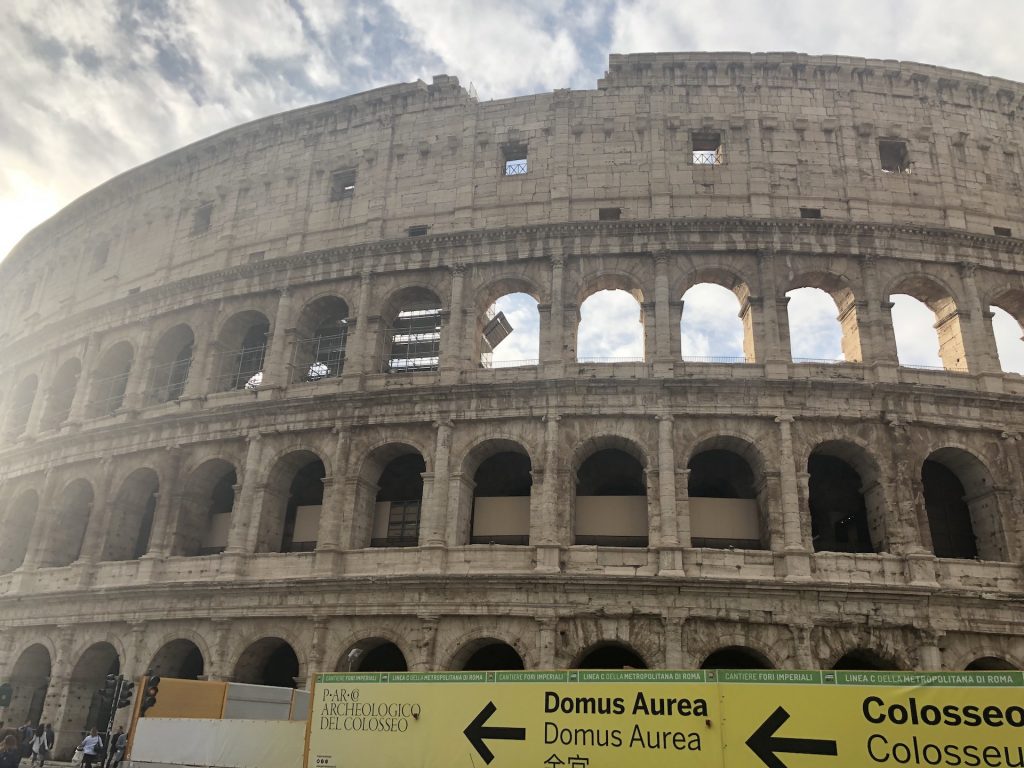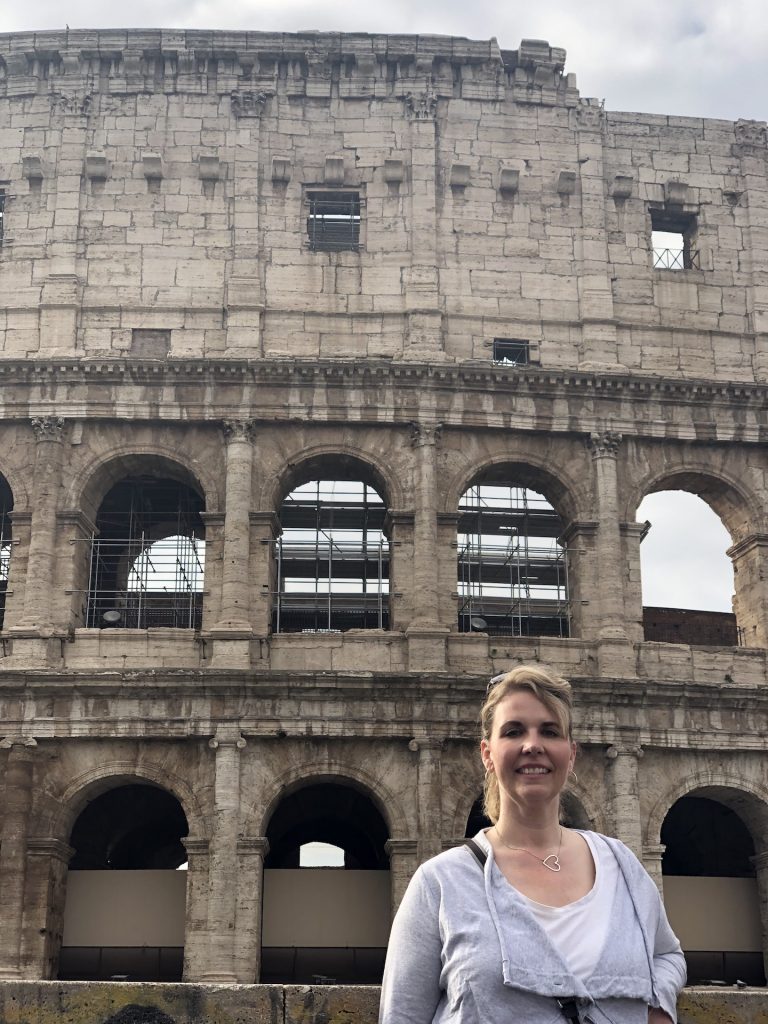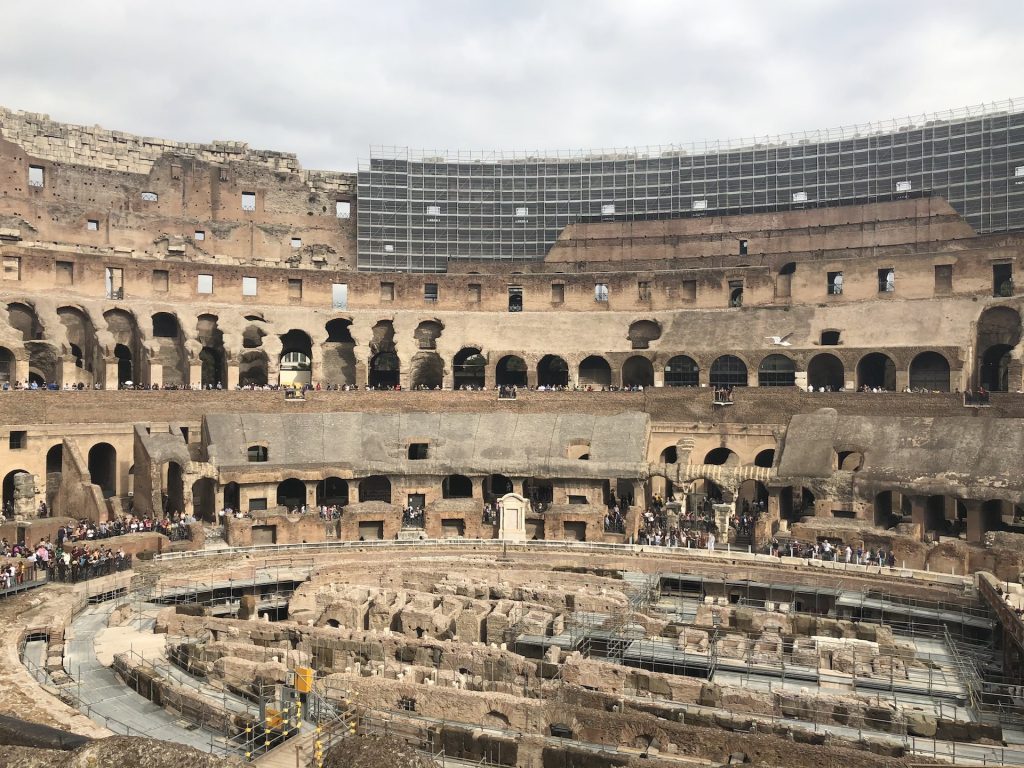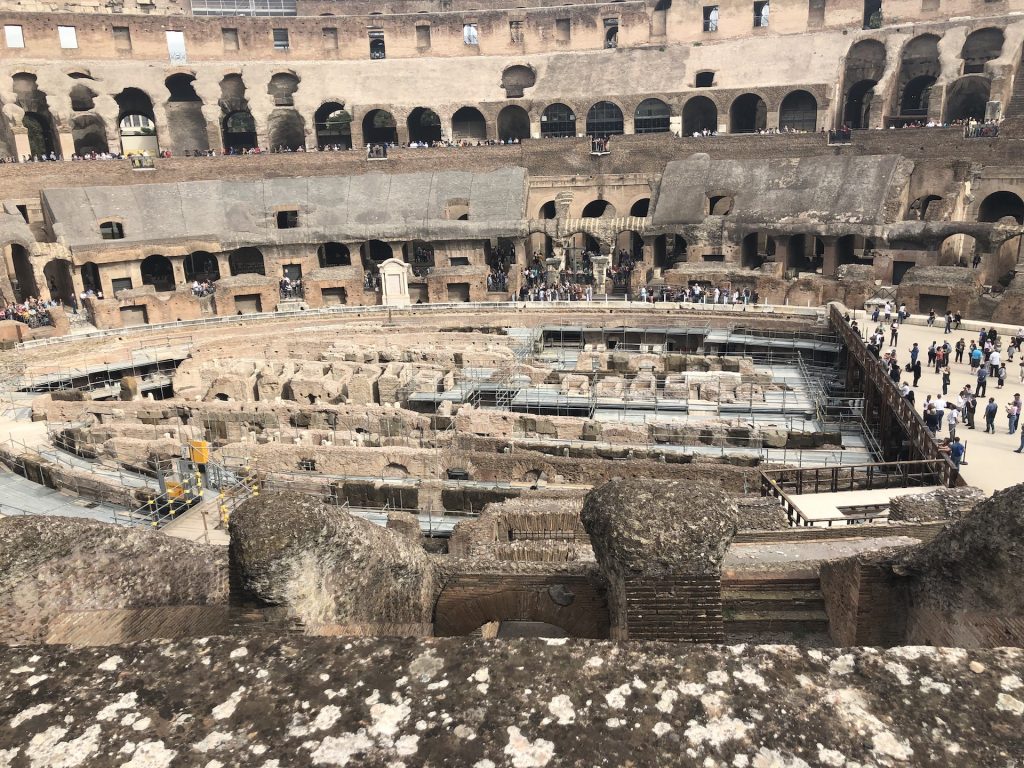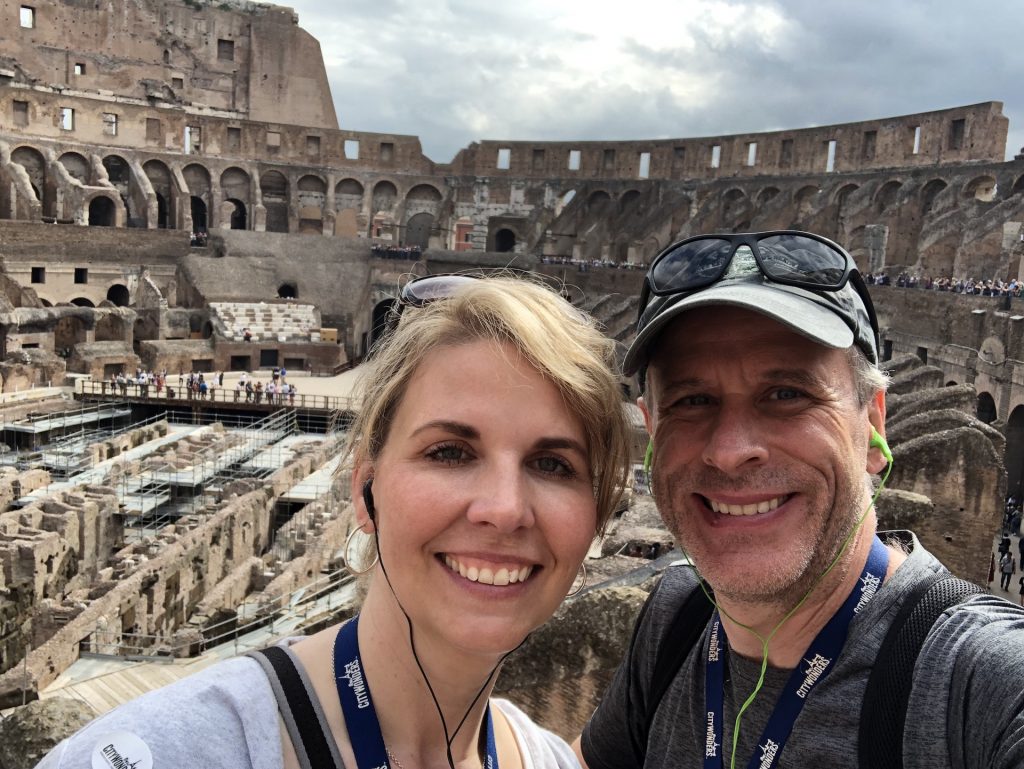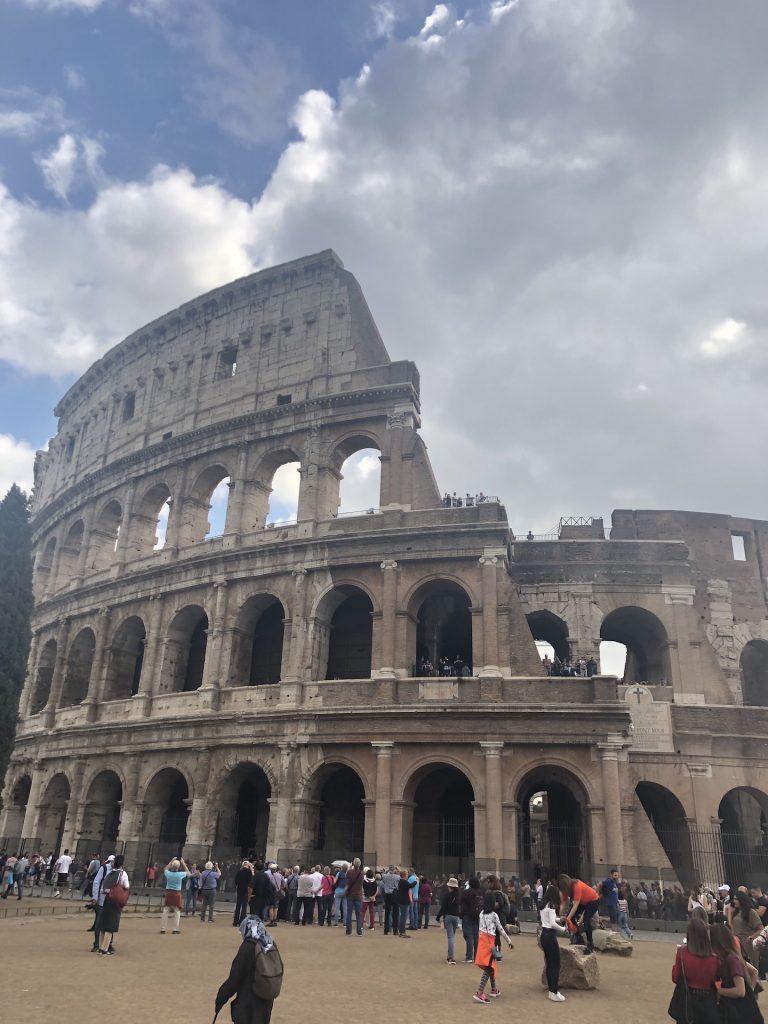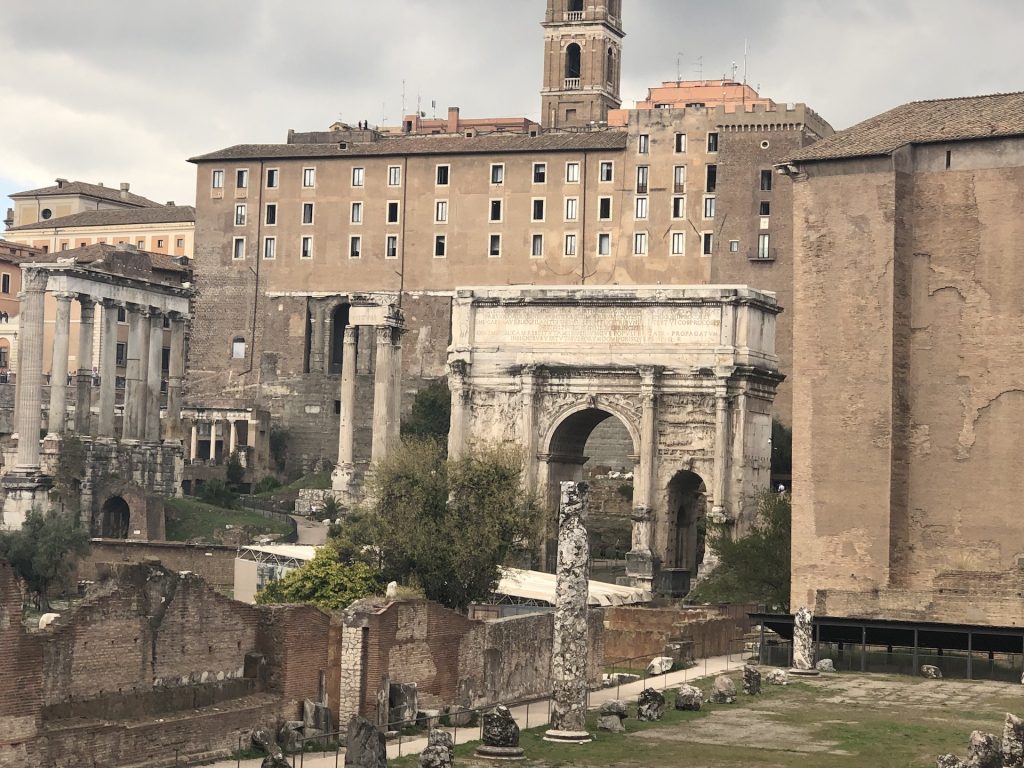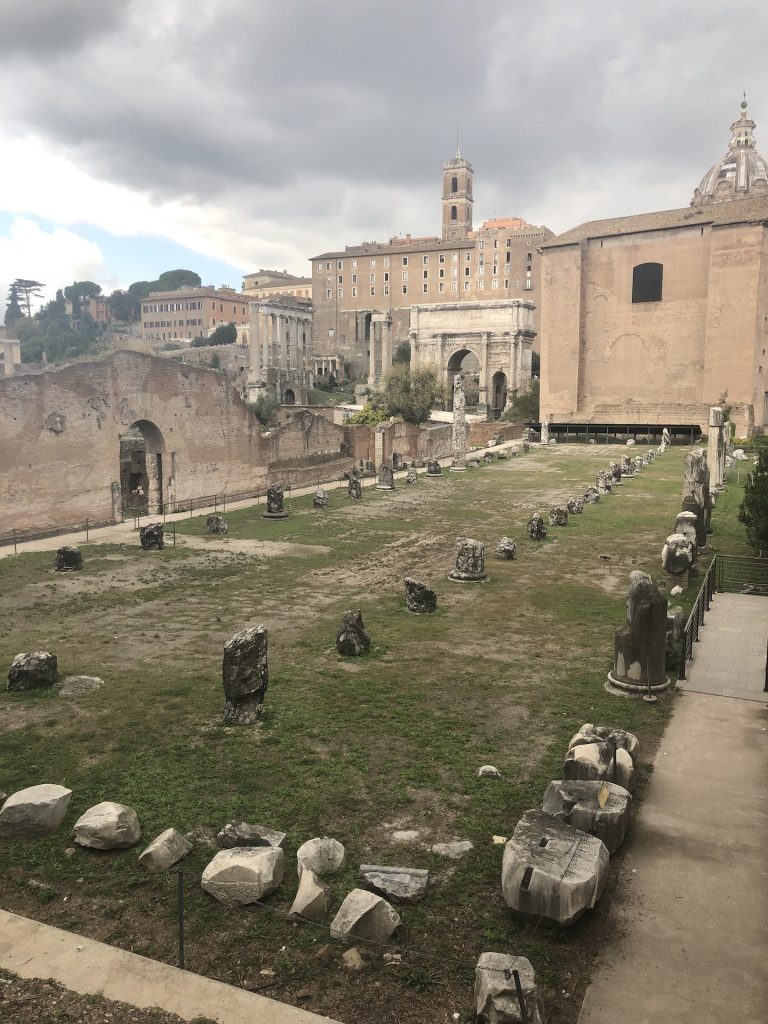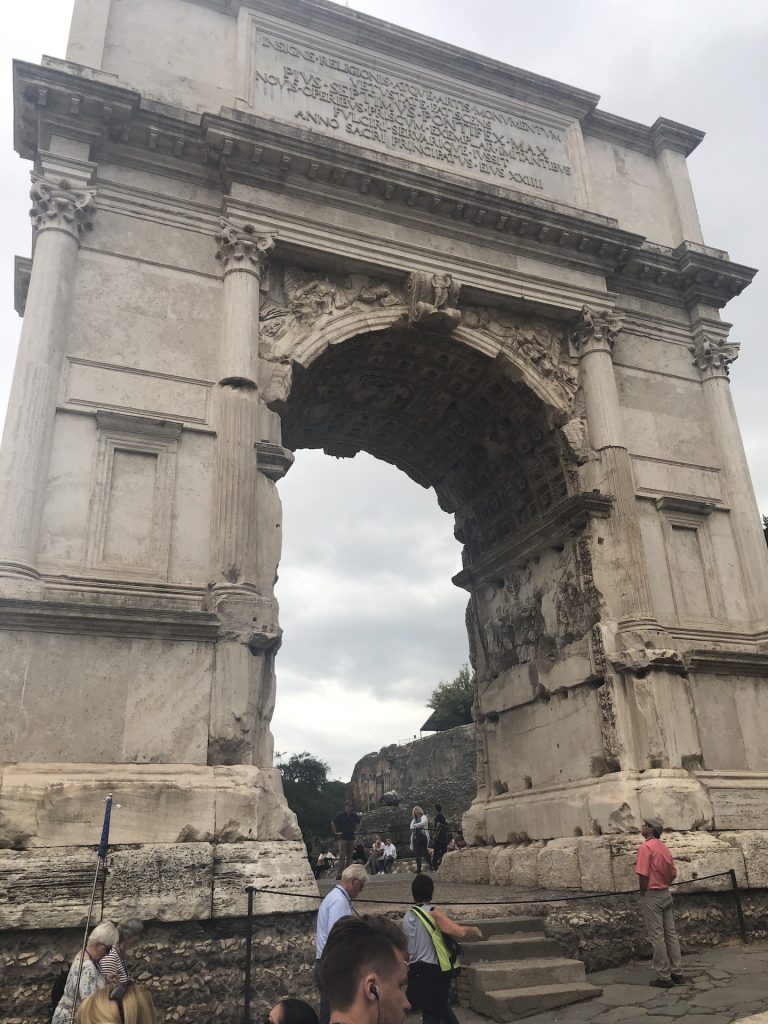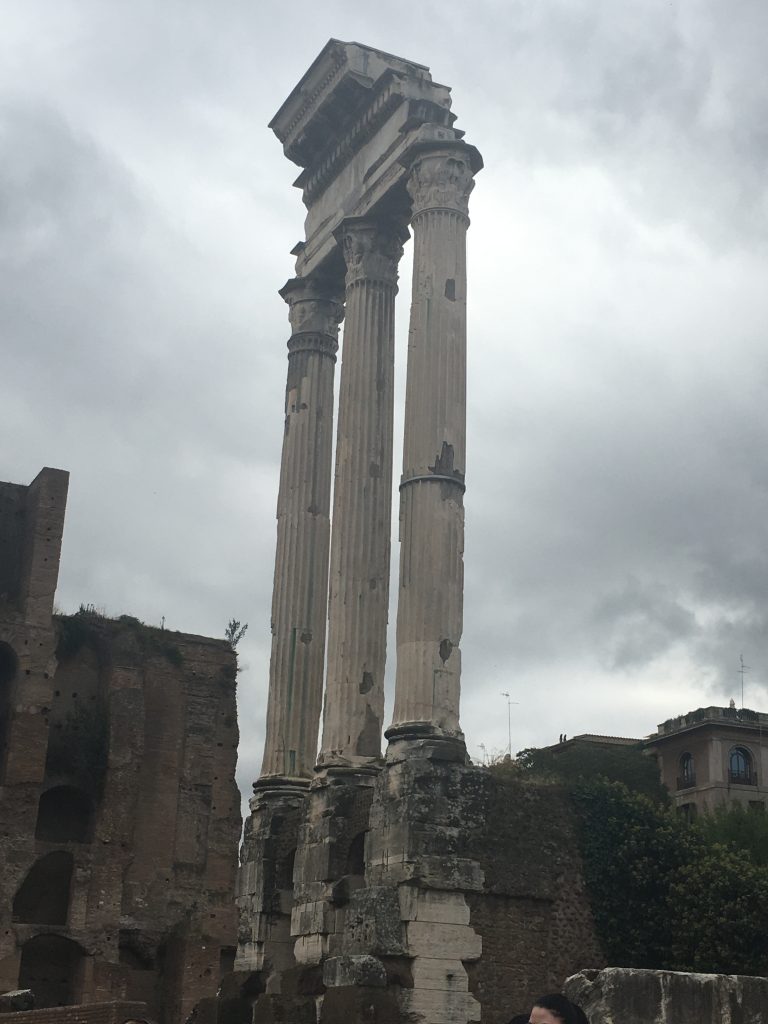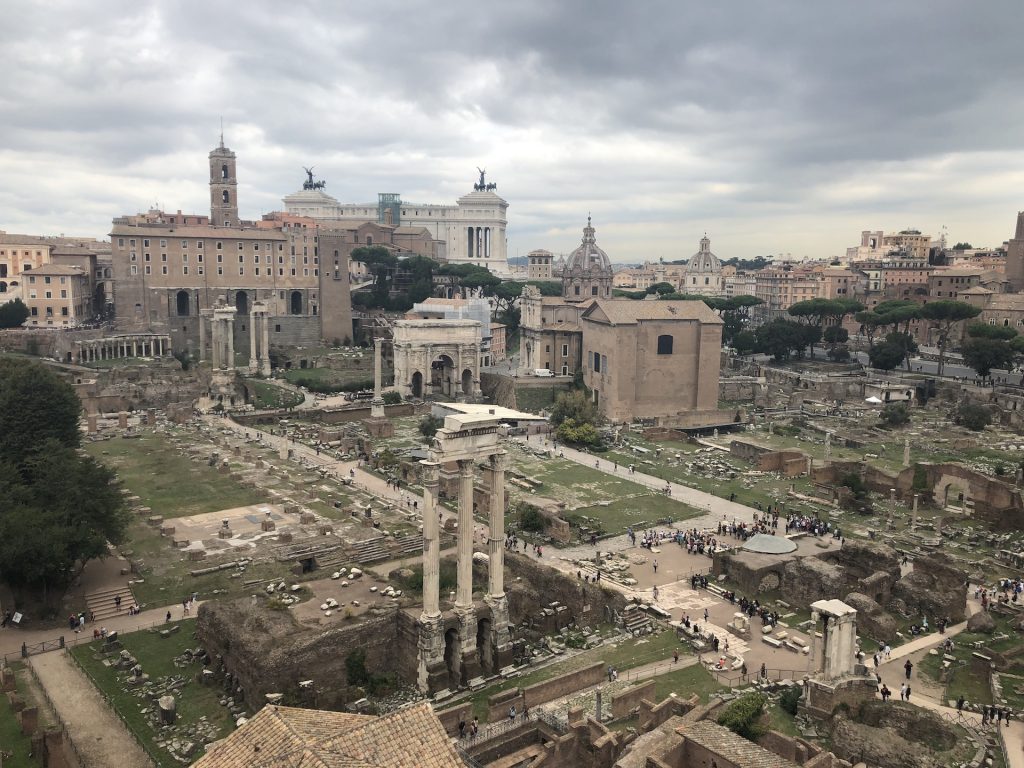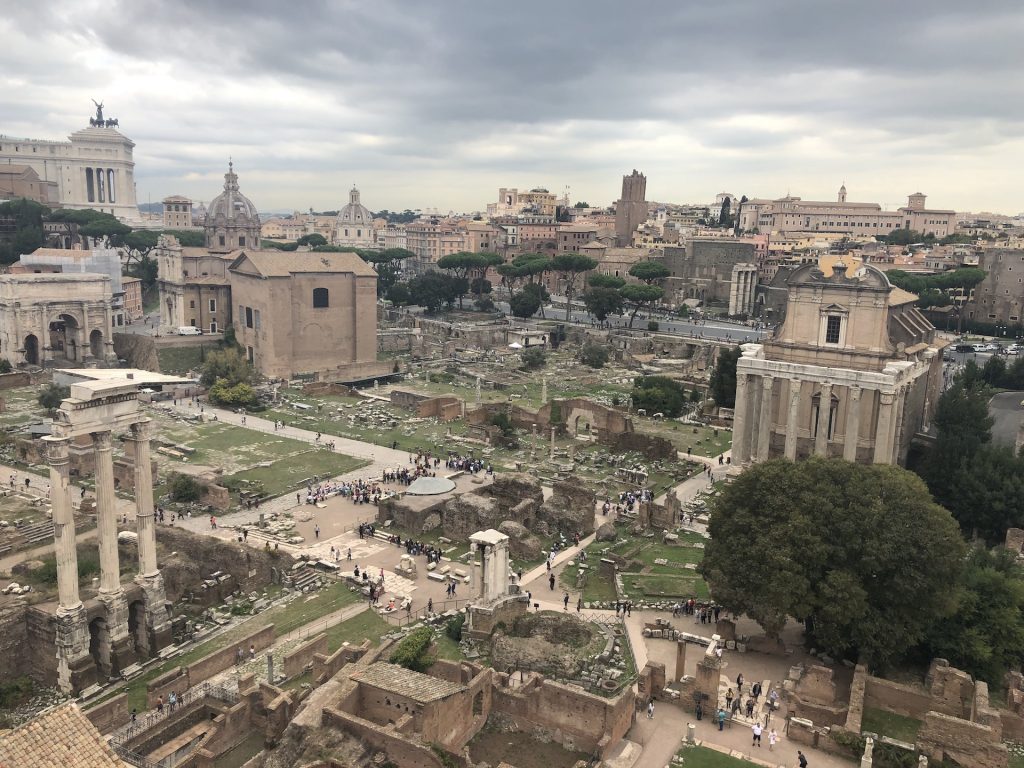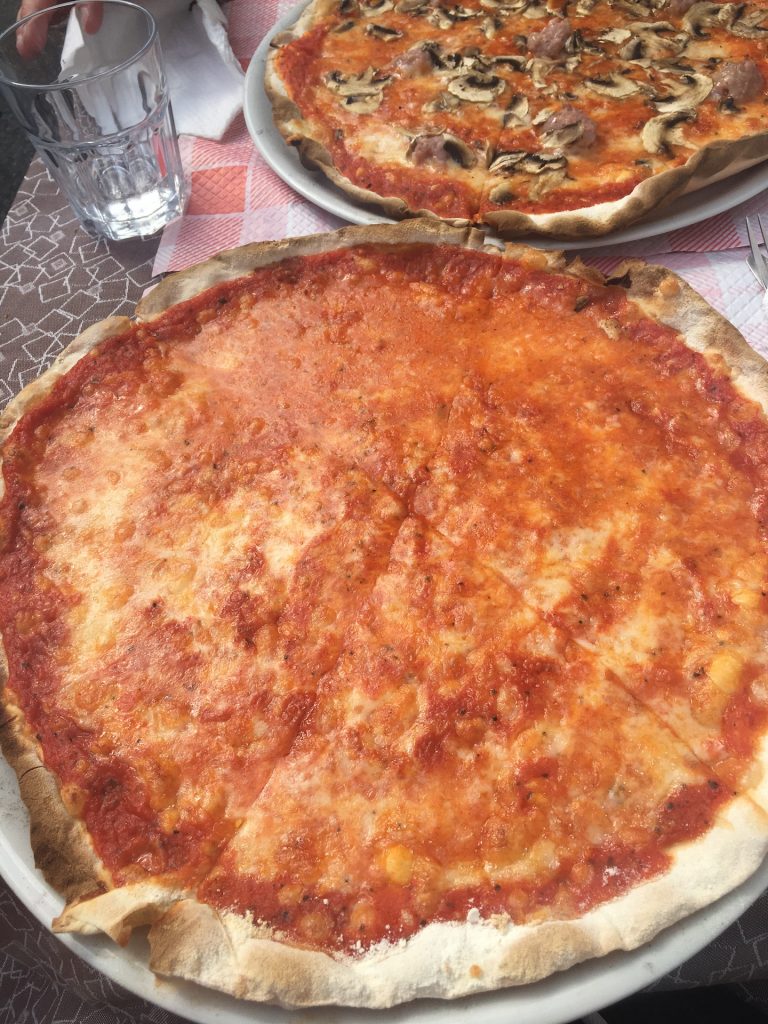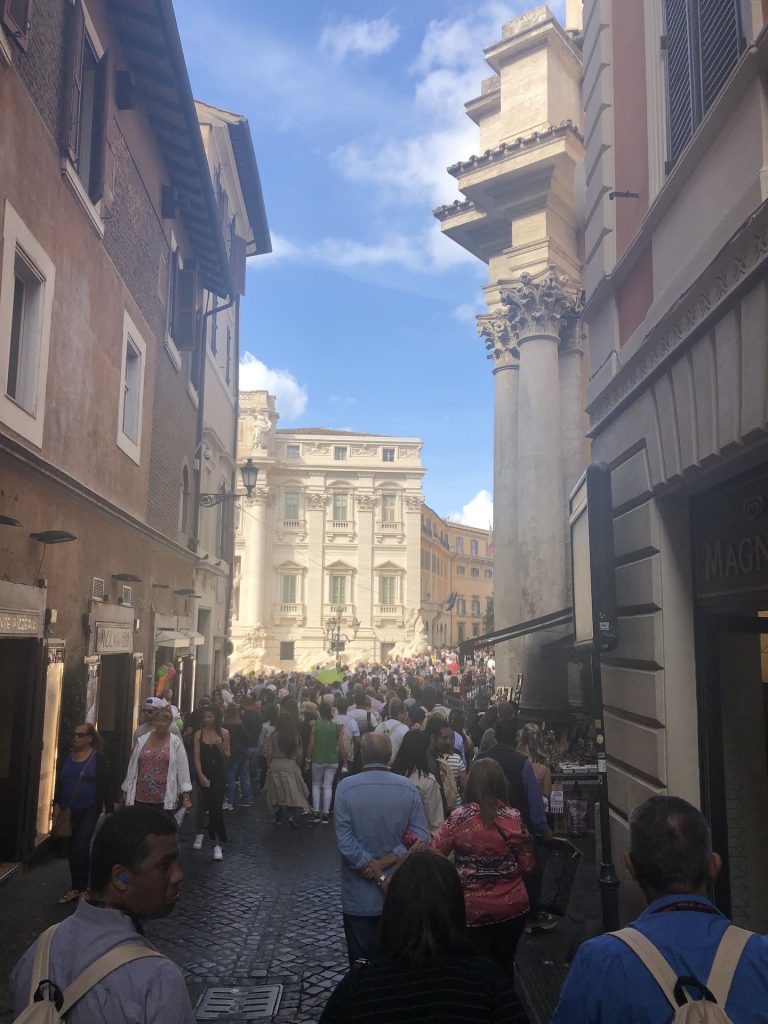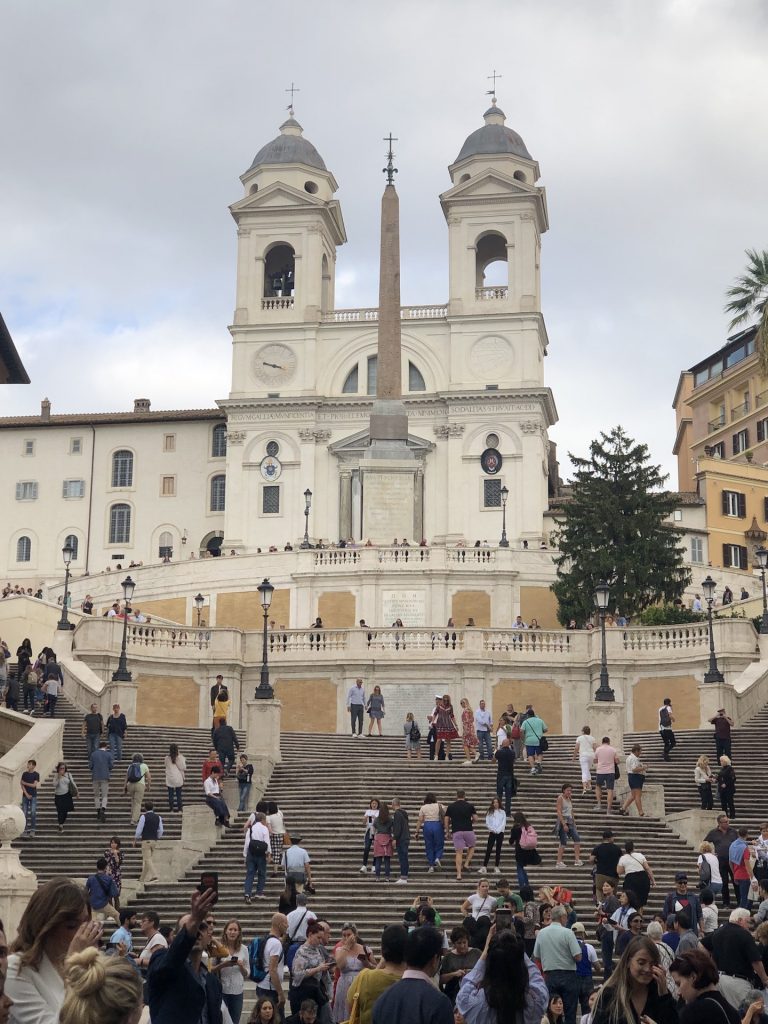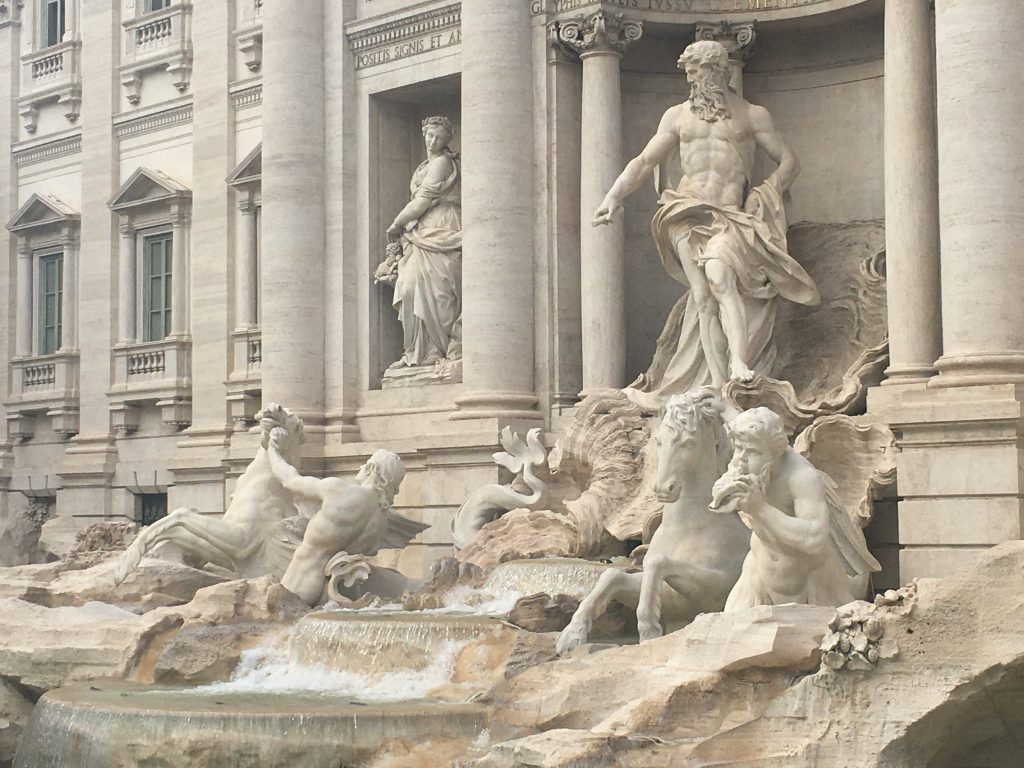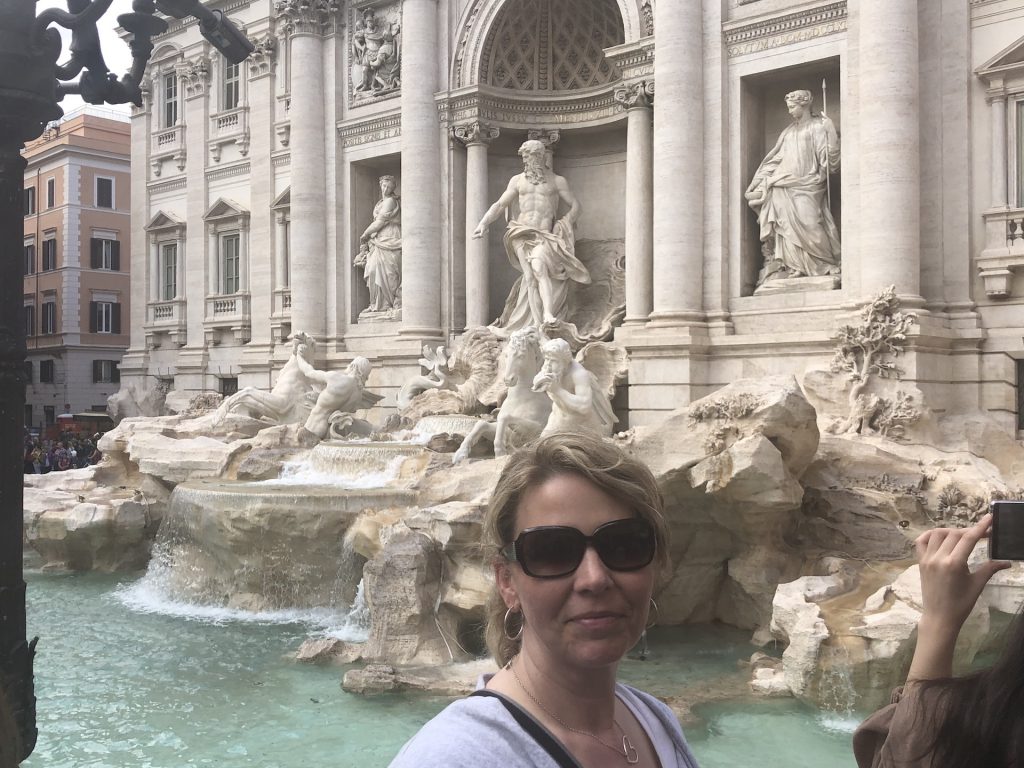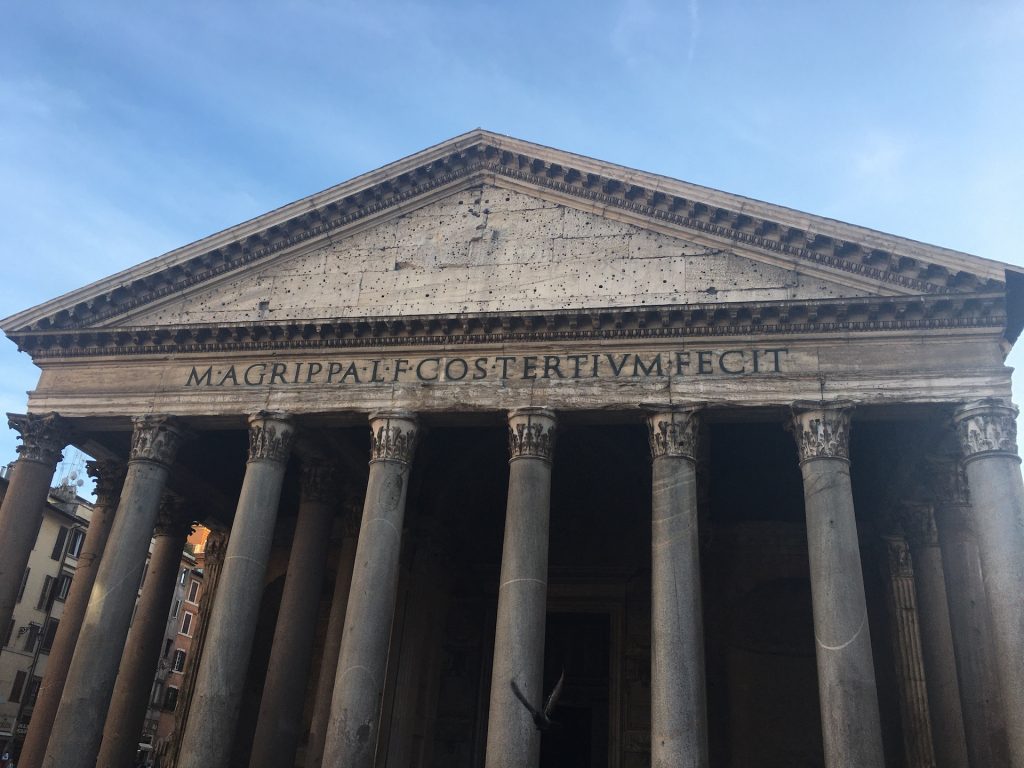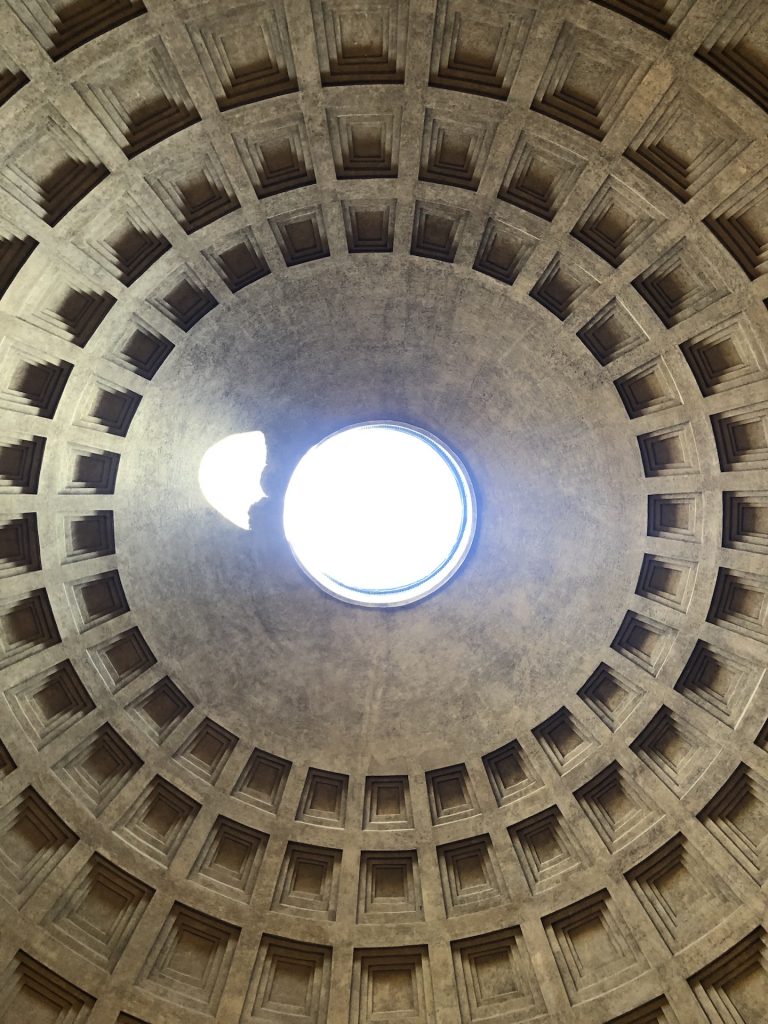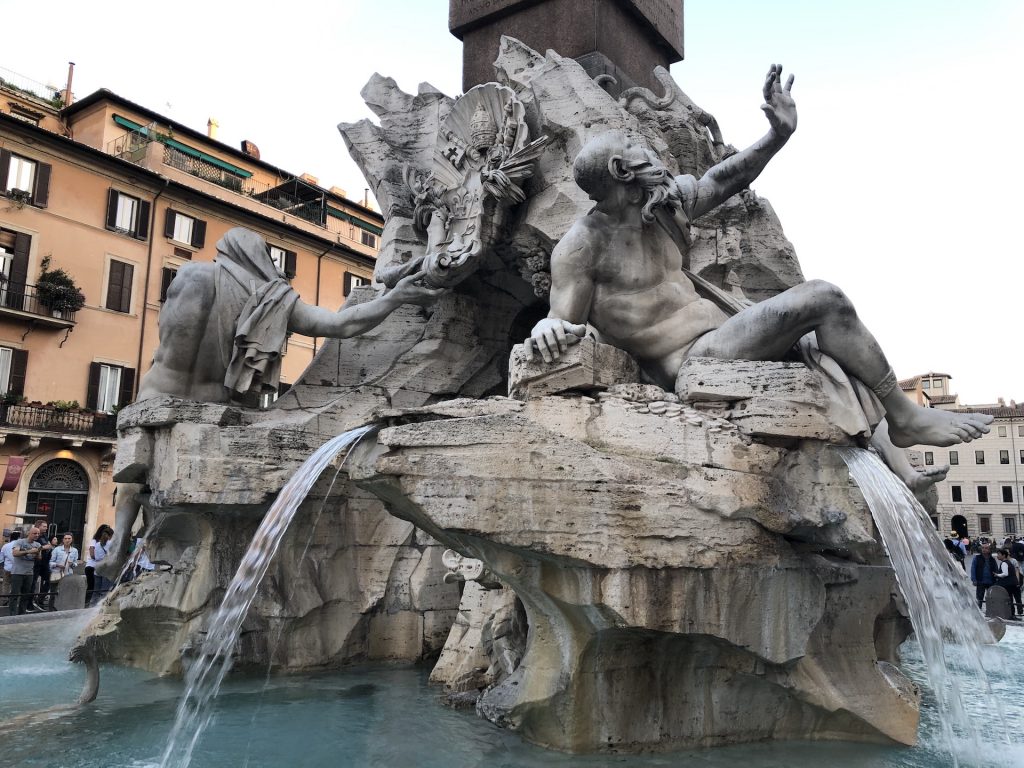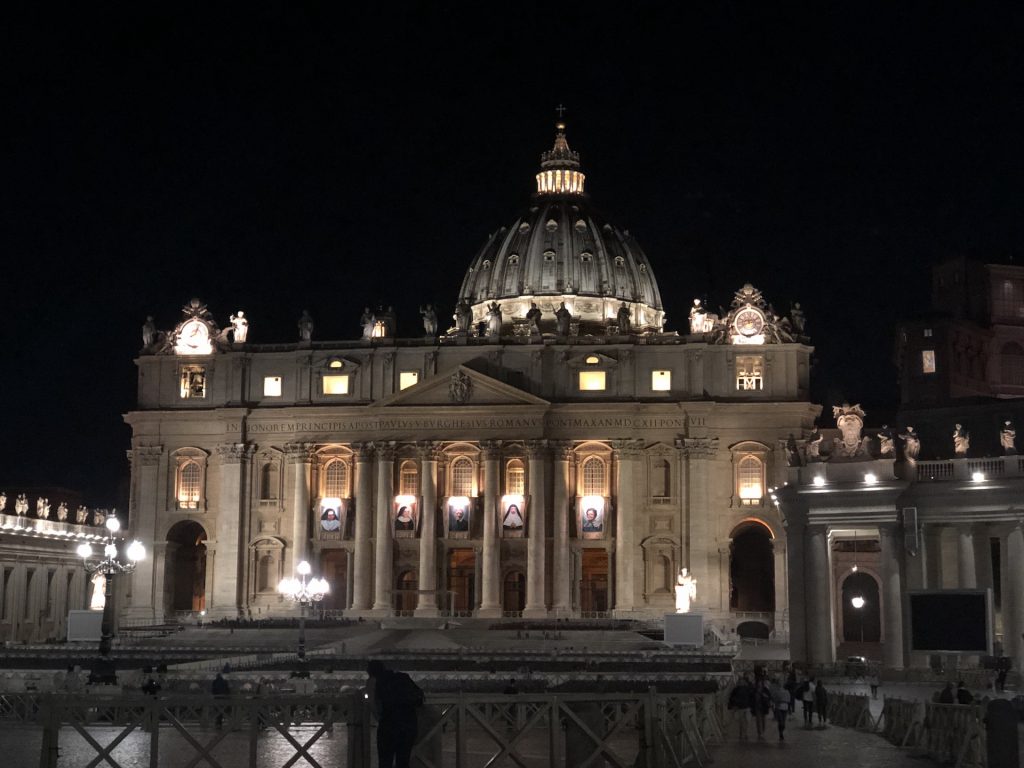Best of Rome
With a name like that who could pass up this tour? And the cherry on top? It starts at 10:30. That means time for a relaxing breakfast before catching the train into the city center. Our first stop is the Colosseum and the metro drops us off right at the entrance. Given how long ago it was built you can forget that it is surrounded by a major capital, but can you imagine walking out of the subway every day on your way to work and seeing this?
We quickly find our group and get a brief history of when it was built, why we call it the Colosseum (and not the Flavian Amphitheater), and how they managed to pull off major events like naval battles with real ships. It is a mind bending feat of engineering from thousands of years ago, even with much of it stripped away and used as material for other buildings over the years. Obligatory pictures below but they don’t do it justice.
A few blocks away sit the ruins of the Roman Forum. They are far less preserved, save for the few buildings that we converted to churches, but the history is interesting and the remains provide a sense of scale of what was the most powerful empire of the time.
We finish the first part of the tour with a short hike to the top of Palatine Hill. Legend holds that the city of Rome was founded here by Romulus and Remus in 753 B.C. There isn’t a whole lot to see, but a bit of altitude provides some good views of the city.
There is a three hour gap before the next leg of the tour starts, plenty of time to check out some new spots for pizza and gelato (how are people here not 500 pounds?).
On the way to our next meeting point we pass the Trevi fountain and get a taste of what we are in for. It’s a madhouse. What this place looks like during high season I can only imagine.
We start round two in front of the Spanish steps which, as it turns out were paid for by the French. Quite the marketing coup for the Spanish, so kudos to them.
From there it is back to the Trevi fountain and the classic “coin over the left shoulder” tourist move. Apparently, the city scoops us 3,000 Euros a week from the fountain that they then donate to charity.
Next stop is the Pantheon, the best preserved building from Roman times. It is sometimes referred to as a ‘perfect building’ as its height is the exact same distance as its width (meaning a sphere would fit perfectly inside). Nearly 2,000 years later, it still has the largest unreinforced concrete dome in the world and it wasn’t until the 1400s that any dome surpassed it in size (which sits on Duomo in Florence that we’ll see soon enough). Stripped of its marble and bronze exterior, the interior steals the show, leaving one dumbstruck at the ingenuity that went into building something at this scale.
Last on the list is Piazza Navona, one of the many plazas in the city center. It is a hub of activity with people milling about and various performers entertaining the crowd, but the main attraction is the Fountain of Four Rivers, one of the most famous of Bernini’s works in Rome.
Like yesterday, we’ve put on a lot of miles and decide to find the train and head back to the hotel. Night has fallen though and we quickly find that Rome has a completely different vibe once the sun goes down. The crowds dissipate, the narrow, cobblestone streets light up, and the sidewalk cafes buzz with conversation. It’s how I imagined Italy and, before we know it, we’ve walked all the way back to St. Peter’s Square. We’ll be back again tomorrow to see the Basilica, but tonight we’ll just soak it all in.
